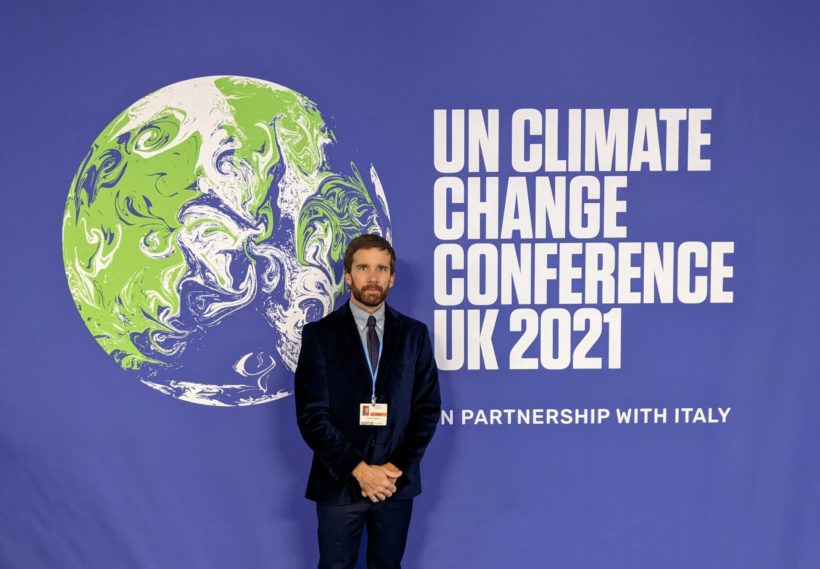Pressenza’s correspondent in Glasgow covering the COP26 negotiations, Rick Wayman, sends us this opinion piece on the increasingly relevant subject of Carbon Dioxide Removal.
Carbon Dioxide Removal (CDR) is emerging as a significant pathway to restore the climate, with a small but growing profile at COP26. There is noticeable momentum for dealing with legacy carbon dioxide in the atmosphere. Even if the world were to achieve net zero emissions targets today, there remain at least one trillion tons of legacy carbon dioxide in the atmosphere. This legacy CO2 will remain in the atmosphere for centuries, exacerbating the climate chaos the world has begun to experience in recent decades. CDR aims to remove this legacy carbon dioxide from the atmosphere and sequester it, ideally for centuries to come.
On Monday 8 November, the Global Carbon Removal Partnership launched at a side event in the official “Blue Zone” at COP26. This partnership started from a task force assembled at the World Economic Forum in Davos in 2020, and is now a standalone entity with an influential multi-stakeholder participation.
The partnership is led by Dr. Sanjeev Khagram, Dean of the Thunderbird School of Global Management at Arizona State University, and will be co-headquartered in Nairobi and Los Angeles. Both the Kenyan government and the City of Los Angeles have been important proponents of CDR, setting a strong example for other local and national governments around the world. The private sector is also well-represented in the Partnership, with companies working on innovative technological and nature-based CDR solutions collaborating toward a common goal.
At a separate event on CDR in the Blue Zone on the same day organized by the Bellona Foundation, panelists posited that there is no time to wait. CDR solutions must be scaled up now, and improvements can be made along the way where necessary. The sheer scale of legacy CO2 that needs to be removed from the atmosphere demands a scale-up of CDR processes of, in the estimation of Christoph Beuttler, Head of Climate Policy at Climeworks, 60–80% per year at a minimum.
This CDR scale-up can be — and is being — advanced by diverse stakeholder groups. Cities are leading from the local level, demonstrating the viability of CDR and policy solutions that can then be scaled and replicated at the national and international levels. The private sector is raising the bar on climate commitments, pushing past “carbon-neutral by 2050” goals and providing the early-stage capital needed to scale the CDR sector. Microsoft was the first company to pledge to become carbon-negative by 2030, and a growing cadre of major corporations is following suit. Individuals are minimizing their own carbon footprints, demanding responsible climate practices from brands, and calling for more ambitious commitments from their government representatives.
With a momentous scale-up of carbon dioxide removal in the coming years, the levels of CO2 in the atmosphere could be restored to 300ppm by the year 2050, according to the Foundation for Climate Restoration. It will require myriad solutions, both technological and nature-based, in order to succeed. While CDR has not yet made it on to the official COP agenda in a meaningful way, the private sector and individual governments are moving forward to prove its viability and effectiveness.






